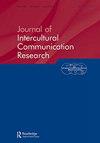教学话语中的群体间关系意识形态:流动儿童教育书籍中的文化表征与跨文化互动
Q1 Social Sciences
Journal of Intercultural Communication Research
Pub Date : 2021-04-05
DOI:10.1080/17475759.2021.1910065
引用次数: 3
摘要
将教科书视为构建社会环境解释框架的工具,我们重点研究了俄罗斯移民子女学校教科书的内容。在群体间意识形态理论和刻板印象内容模型的框架下,我们评估了不同文化及其代表在不同社会背景下的表征特征。结果表明,接收人群处于“高温暖、高效率”象限,而移民处于“高温暖、低效率”象限,并且移民的表征存在差异:儿童被包括在与接收人口的交流中,而成年人则被隔离。本文章由计算机程序翻译,如有差异,请以英文原文为准。
Ideologies of Intergroup Relations in Pedagogical Discourse: Representation of Cultures and Intercultural Interaction in the Educational Books for Migrant Children
ABSTRACT Viewing a textbook as a tool of construction of framework for interpretation of social environment, we focus on the content of Russian school books for children of migrants. Within the framework of the theories of intergroup ideologies and Stereotype content model, we evaluate the character of representation of different cultures and their representatives in various social contexts The results show that the receiving population occupies “high warmth and high efficacy”, while migrants occupy “high warmth and low efficacy” quadrant, and a difference in the representation of migrants: children are included in communication with the receiving population, whereas adults are isolated.
求助全文
通过发布文献求助,成功后即可免费获取论文全文。
去求助
来源期刊

Journal of Intercultural Communication Research
Social Sciences-Cultural Studies
CiteScore
2.00
自引率
0.00%
发文量
20
 求助内容:
求助内容: 应助结果提醒方式:
应助结果提醒方式:


